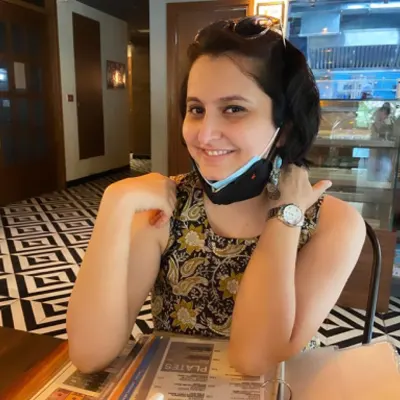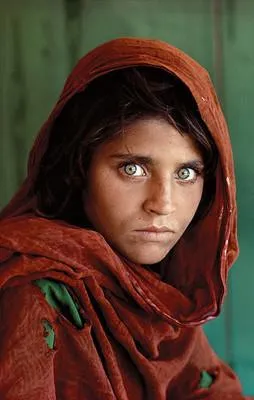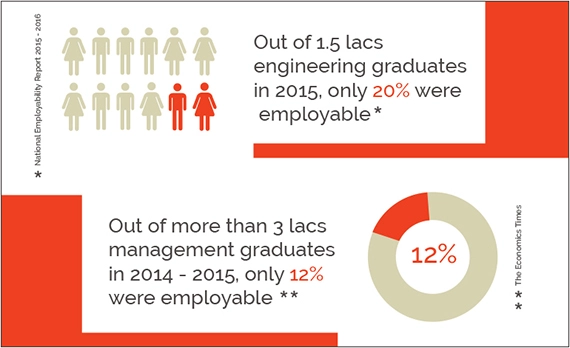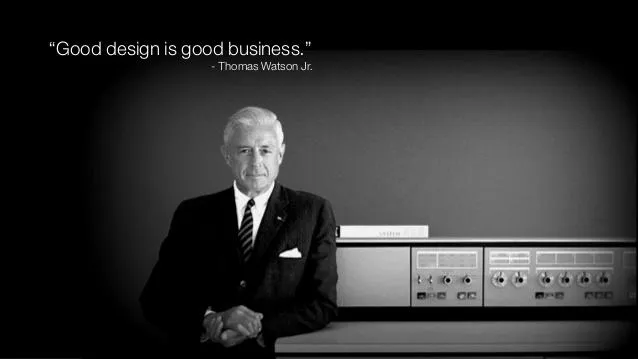Table of contents
- What is the role of CRM in Fashion Merchandising?
- Implementation of CRM in Fashion Merchandising
- Building Customer Loyalty in Fashion Merchandising
- Challenges in CRM for Fashion Merchandising
- CRM Success Stories in Fashion Merchandising: Brands that Got it Right
- Future Trends in CRM for Fashion Merchandising

Have you ever found yourself impulsively snagging that Levi's denim jacket, all because a timely push notification on your phone offered an irresistible discount tailored to your taste? Can you recall a moment when a brand's personalised message, tuned to your buying preferences, not only caught your attention but had you reaching for your wallet? Imagine the power of Customer Relationship Management (CRM) in creating such moments—where your favourite brand seems to read your mind and turns each notification into a curated fashion discovery. Can you envision picking a garment not just for its style, but for the experience that came with it, all thanks to the strategic mastery of CRM?
CRM is an amalgamation of strategies and techniques that fashion brands use to manage relationships and interact with their existing and potential customers. The idea is to understand the customer's needs and build a rapport with them in order to have an edge over the competition present in the market. For instance, categorically defining a customer’s buying pattern and in turn, designing relevant incentives, discounts, coupons, customised messages, or gifting strategies. The basic agenda of CRM is to collect data, create personalised experiences, build customer loyalty and retain them for a longer duration.
The collection of data becomes crucial in CRM. Fashion merchandisers collect and analyse data from various sources, such as e-commerce platforms, EBO’s, MBO’s, social media platforms and other relevant channels. Based on this collected data, it is inferred and the output is customised to improve customer satisfaction and retention. This enables CRM-centric fashion brands, fashion designers , retailers and D2C to have an edge over other brands which may not focus on CRM.
What is the role of CRM in Fashion Merchandising?
In the world of fashion, using Customer Relationship Management (CRM) is crucial for effective brand promotion. Here are seven ways brands successfully use CRM to promote their brand:
Better Customer Loyalty: If the brand understands customers’ preferences and delivers customised incentives, surely the loyalty and satisfaction of customers will improve towards the brand. For instance, at Myntra if a customer shops regularly and the buy value is comparatively higher than an average customer, in turn Myntra offers an Insider program with an early access to its sale events, new season launches, higher/additional discounts which ensure higher conversion & enables the customer to stay engrossed to the platform.

Better understanding of Customer Behaviour: By using the data collected at all touchpoints, the CRM tool helps understand customer preferences and purchasing patterns. What demographics of shops at what price points and preferences of trade channels will help brands push merchandise on the selective touchpoint? For instance, if a brand understands these, then certain merchandise can only be pushed to a particular channel to reach targeted audiences.

- Better Customer Experiences: With the presence of multiple fashion brands in the market, each brand has to have a differentiating factor and provide a good customer experience in order to stand out. By getting adequate data, a brand can create products and promotions as per the customer’s needs and preferences. For instance, luxury fashion brands like Ralph Lauren are installing virtual mirror technology to help customers in retail outlets understand the correct sizes and colours that will be suitable for them.

- Focusing on establishing long-term relationships:The major reason fashion brands go for CRM tools is to build a long-term relationship with their customers to increase customer retention by introducing loyalty programmes, sending customised messages and giving benefits. For instance, if you shop from Westside, you automatically get a 20% discount on your birthdays and anniversaries. This is a brand’s way of maintaining long-term relationships by making customers feel special on their special occasions.
- Optimising Inventory: Using the CRM tool helps understand customers’ needs and wants. By using the same data, a fashion consultant can help decide whether to understock or overstock inventory. For instance, if a particular pair of classic shoes is doing great in the fashion industry and trends, then a fashion merchandiser can restock the inventory after understanding the customer's preferences.
- Touchpoints integration: A CRM expert or fashion merchandiser helps in the integration of data from various touchpoints, ensuring a consistent brand image. Whether a customer engages through a physical store, website, mobile app, or social media platform, CRM ensures a customised experience. For instance, a customer, after getting a coupon, has the flexibility to redeem it from a retail outlet or e-commerce website. It creates ease for customers.
- Increased Revenue Generation: A fashion brand providing products to its target audiences with customised offers and campaigns will help generate more revenue. For instance, a fashion merchandiser’s job at Uniqlo is to introduce a down jacket to the market in classic colours black and blue. After understanding the demand for the product they further introduce the same product in varied colours and push it through social media campaigns, which would lead to revenue generation for the brand.

Implementation of CRM in Fashion Merchandising
Every fashion brand CRM tool is implemented at various touch points, such as e-commerce websites, social media, and retail outlets. This helps collect relevant data and establish the basis on which strategies are implemented to create a long-term relationship with its consumers.
- Step 1: To begin with, the current touchpoints are evaluated in terms of the relevance of the collected data; this helps identify gaps, if any, and further processes devised by a fashion merchandiser or CRM expert.
- Step 2: Further, software like Zoho CRM is installed at channels, which customises itself as per the brand’s requirements and offers characteristics like tracking the life cycle of a customer, coordinating digital communication strategies, etc.
- Step 3: The collected data further needs to be centralised so as to facilitate further analysis and develop better strategies to reach the target audience. The one thing which needs to be insured is, the collected data should be accurate and consistent.
- Step 4: Now is the time to segment this data as per each customer’s profile depending on their purchase history, buying patterns and lifetime value. Based on this segmentation, they are targeted in the marketing or communication campaigns.
- Step 5: Targeting through various channels consistent and personalised messages are conveyed in order to remind its customer about the brand and to create a long-term relationship.
- Step 6: Once these consistent messages are delivered each activity is carefully monitored to study the outcome. For instance, customer retention rates, customer life cycle, cart value etc.
Building Customer Loyalty in Fashion Merchandising
Building customer loyalty in fashion merchandising is a process which focuses on creating meaningful connections to sustain long term relationships through strategic approach and consistent engagement. Here are some ways to make customers loyal towards a fashion brand:
- Deliver good and seamless customer experiences at all given channels to retain customers. The idea is to create a great shopping experience. Steps like training the retail staff in a retail outlet, or ensuring a user-friendly interface to ease browsing experience on an app or a brand website. It’s the convenience of shopping which helps customers navigate and come back to a particular fashion brand. Example: Fabindia never had a brand ambassador to promote its products; rather the brand focuses on a memorable retail experience, product experience and engaging audiences through their website.
- Sending personalised marketing messages on special days such as anniversaries or birthdays is another way to make customers feel appreciated. This personal touch makes the customer feel valued and develops a deeper bond with the fashion brand. Brands like Biba send personalised discounts and messages on customer’s birthdays.Also, personalised marketing campaigns across various social media platforms also play a crucial role in retaining the customers, collab of Affle X Zivame.
- Implementing loyalty programmes in any form encourages customers to return to a particular brand, fostering a sense of belonging and making them feel valued. For example, when shopping at Tommy Hilfiger, the fashion brand offers credits that can be redeemed during the next shopping spree.
- Sharing compelling content on social media to emotionally connect with customers is a method for building a strong bond between the brand and the customer. For example, Anita Dongre's brand, Grassroots, highlights the hand embroidery done by women artisans of the Sewa group as a means to forge an emotional connection with its customers.
- Establishing a community around a brand is another effective way to forge a connection with customers. This occurs when customer photos, reviews, and experiences are shared. For instance, Kay by Katrina Kaif and Bliss Club, which prioritise community over brand, serve as perfect examples. These brands are actively creating communities for customer engagement rather than simply promoting merchandise to their consumers.
- Handling data from different touchpoints can lead to issues with accuracy, consistency, and integration.
- Data received is often inconsistent or disjointed, requiring careful unification using either manpower or technology.
- Handling customer data becomes challenging, particularly when dealing with larger audiences.
- Collecting extensive data requires caution regarding privacy and compliance with regulations.
- The fashion industry is dynamic, requiring brands to adapt to changing trends and consumer behaviour.
- Some employees are resistant to changing and getting trained, so it’s a challenge for companies to train employees to use the software effectively.
- Measuring the return on investment in CRM tools is tricky. So a fashion merchandiser (CRM expert) cannot differentiate.
- Lead Generation: If a customer shops or scrolls at Myntra all the information is recorded in the form of a customer profile (demographic, geographic and behavioural). This data is used for targeted marketing and personalised communication.
- Personalised Communication: Utilises various channels such as email marketing, SMS, social media, and the Myntra application. Examples include welcome emails, cart abandonment reminders, order confirmations, similar product recommendations and new product launch announcements.
- Search Engine Optimisation: Optimises online content by incorporating relevant keywords and engaging in blogger outreach to improve visibility in search engine results.
- Exchange/ Return Policy: Offers an easy and customer-friendly exchange/return policy with no questions asked, enhancing customer trust and satisfaction.
- Payments and Cashbacks: Simplifies transactions by linking cashbacks to PhonePe wallet, providing an added incentive for customers. Flexible refund policies, allowing customers to choose between credits in the Myntra wallet or direct refunds to their bank accounts.
- Referral Programme: Implements a referral programme encouraging customers to invite friends and family to the Myntra application or website. Rewards both referrers and referees, fostering customer engagement and expanding the customer base.
- Loyalty Programme: Offers a loyalty program that enhances the online shopping experience for customers. Includes various loyalty levels with associated perks, encouraging repeat business and brand loyalty.
- Right now data analysis at the backend is done by fashion merchandisers. But in future with things to be AI-driven, it will help predict fashion trends, forecast demands and analyse customised recommendations.
- Virtual try-ons introduced by Lenskart are the future—they are going to revolutionise the way customers buy fashion merchandise online. CRM integration will lead to ease in shopping for customers. And this will also benefit the companies by reducing the amount of returned merchandise.
- Sustainability is also going to be a big thing in the future, especially when consumers are aware. Fashion brands can make use of the data collected with CRM software and provide transparent information about product sourcing, ethical practices, and sustainable options.
- Better protection of data in the coming years. CRM, as a tool and software, needs data protection so the customer feels secure. That is going to be talked about a lot in the future, and fashion brands have to be extra careful about it.
- A seamless customer experience is also going to play a very crucial role in the future of CRM. So fashion brands have to come up with ways to create a truly seamless experience for their customers.


Surprising customers with gifts and gestures is another effective strategy to foster loyalty towards a particular brand. For example, Tanishq offering an 18% discount to its most valued customers upon completing 18 years in the industry serves as a thoughtful way to provide surprises and show appreciation to its customer base.
Collecting feedback from customers who regularly shop from a fashion brand is crucial for gaining insights and fostering long-term customer relationships. For example, Van Heusen Woman conducts sessions with focus groups to gather feedback on the likes and dislikes of the brand. This proactive approach helps to keep customers engaged and committed to the brand over an extended period.
Challenges in CRM for Fashion Merchandising
Fashion merchandisers setting up CRM software/ tools at the retail outlet or the backend of the website all come with challenges. Here are some challenges faced by merchandisers/ CRM experts:
CRM Success Stories in Fashion Merchandising: Brands that Got it Right

Myntra is a marketplace for fashion and lifestyle brands in India. The platform focuses on merchandise like clothing, shoes and accessories. It has also started focusing on beauty and personal care products. Below are the basic customer relationship marketing processes and methodologies applied at Myntra.

Future Trends in CRM for Fashion Merchandising
Certainly, as technology and consumer behaviour evolve, CRM (customer relationship management) in the fashion industry will continue to adapt. Here are some ways in which CRM is expected to expand in the future:
In summary, CRM in the fashion industry is not only about managing customer data by Fashion Merchandisers or CRM Expert but is also about using that data strategically to create campaigns, and personalised messages, create better experiences to build loyalty, and have long term commitment relationships to retain customers for repeat sales and generate revenue.
Explore More About Fashion Business Management
- Loved reading this piece? Author Shraddha Kochar has also written about the importance of a bachelor's degree in fashion design to make a successful career. In another vein, she talks about the 5Rs of fashion merchandising.
- Have you been looking for some interesting reads about fashion business management? Checkout this handpicked comprehensive list of the top 10 books on fashion business management.
- Are you looking to build a career in fashion business management? Checkout these top 10 career options for fashion management graduates.
- Learn about the art of personal branding from this insightful tete-a-tete between Prof. Usha Nehru Patel, Director-Academics and Shifa Firoz, Celebrity Stylist.






